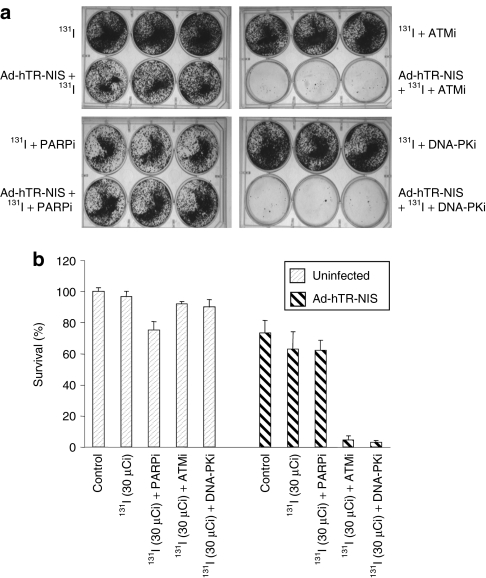Figure 3.
NIS-mediated 131I cytotoxicity is enhanced by DNA repair inhibitors. HCT116 cells were infected with Ad-hTR-NIS (multiplicity of infection = 1) and treated with 131I (30 µCi) 72 hours later in the presence or absence of DNA repair inhibitors. (a) Photographs of representative 6-well plates stained with crystal violet to show viable colonies. (b) Cell survival expressed as a % of control based on counting of viable colonies. NIS delivery followed by 30 µCi of 131I was associated with a modest therapeutic effect in the absence of DNA repair inhibitors. However, combined treatment with ATM (5 µmol/l) and DNA-PK inhibitors (1 µmol/l) caused a massive increase in cytotoxicity such that clonogenic survival was reduced to <5%. In contrast, PARP inhibition (2 µmol/l) was not associated with an increase in NIS-mediated 131I cytotoxicity. None of the DNA repair inhibitors enhanced 131I cytotoxicity in cells that were not infected with Ad-hTR-NIS. Data are representative of at least three repeat experiments. ATMi, ataxia-telangiectasia mutated inhibitor; DNA-PKi, DNA-dependent protein kinase inhibitor; NIS, sodium iodide symporter; PARPi, poly-(ADP-ribose) polymerase inhibitor.

